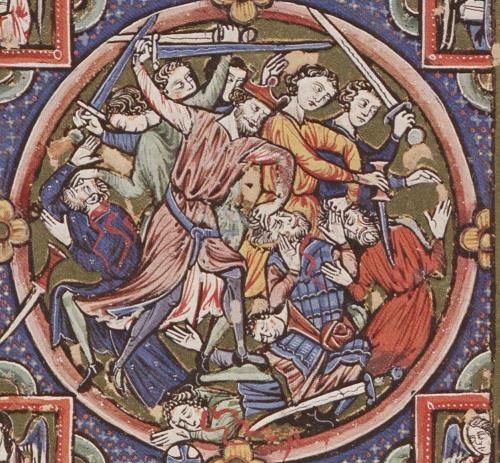Posts: 1,576 Location: Bergen, Norway
Tue 13 May, 2014 1:04 pm
Mart: One should think so, but If you look at the manuscripts of the age, they suggest that the artists have heard some anecdotes, but have not seen the things themselves.
Take the maciowski bible for example. it is a highly detailed work made by professional illuminators. These might have asked a returning crusader "How do you recognize the heathens?". Where upon the veteran might answer "They have pointed helmets, and round
shields."
Consequently the heatens are drawn with pointed helmets and round shields. Everything else is identical to the "default" contemporary standard, because they simply do not know.
In the same spirit, they draw the egyptian chariots of pharaos army as 13th century french haywagons.
The artist in the bible moralise has more detailed depictions of moors and moorish equipment than is common for the period. He might indeed be a returned crusader, or traveler of some sort. But the average northwest european would know about as much about the arms and equipment of the moors as a contemporary american knows of the North Vietnamese Army.

